The year 2022 is drawing to a close, and Internet has its new sensation – the ChatGPT, an AI-enabled chatbot.
Twitter, LinkedIn, and other social media platforms are filled with snapshots of their experiments with the chatbot. And captions have a recurring scheme of words like disruptive, mind-boggling, and groundbreaking. So, what is this buzz all about?
People are amazed at the capability of ChatGPT, an AI chatbot that produces human-like text. They are posting their AI-generated works all across social media. They are using it as an essaybot, having conversations, creating poems, and even code snippets, just in awe of what ChatGPT can do. In addition, they are talking about ChatGPT’s implications on different industries, especially content marketing.
If ChatGPT rhymes like Snoop Dogg, can it create content like content marketers? So, let us deep dive and see what exactly ChatGPT is, how it works, its cryptographic watermark and understand what it means for content creation and digital marketing.
What Is ChatGPT? Is ChatGPT Real?
ChatGPT is, in fact, real and has only been so for a few months now.
ChatGPT is an AI chatbot developed by OpenAI, an AI research and deployment company backed by Microsoft. OpenAI released ChatGPT on November 30, 2022, and it crossed the 1 million user mark within a week after launch.

ChatGPT holds a lot of promise for the future of information and technology. Like many chatbots on the Internet, AI and Machine Learning power the ChatGPT, but the chatbot is way superior to the competition in emulating human writing.
How Does ChatGPT Actually Work?
This hot new chatbot uses GPT3.5 (Generative Pre-Trained Transformer 3), hence the name – ChatGPT.
As you may already know, GPT3 is an autoregressive language model using deep learning to produce human-like text, and GPT3.5 is its improved version. Users have to give an initial text as a prompt, and ChatGPT returns text that continues the prompt.
Unlike other chatbots, ChatGPT3 responds to users’ input and remembers previous inputs and responses. Thus, it allows the users to have actual conversations with the bot and provide refined answers to users’ questions.
The GPT3 language model relies on vast data to train AI. And AI is trained not to accomplish specific but a range of tasks. The model is very similar to how we humans learn. Our brain stores general knowledge we then apply to different tasks in different domains.
So unlike other chatbots, this OpenAI text generator responds to users’ input and remembers previous inputs and responses. As a result, it allows the users to have actual conversations with the bot. It also enables ChatGPT to offer detailed and refined answers to users’ questions.
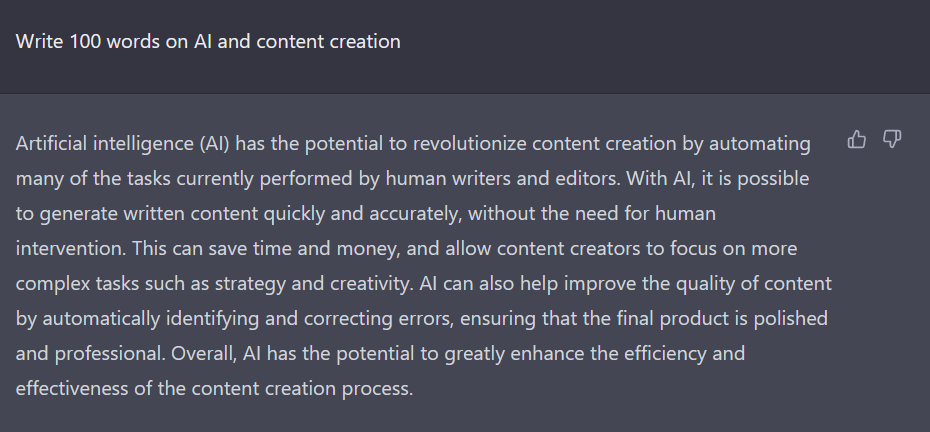
How To Access ChatGPT?
The tool is currently in its research phase and is available to the public for free. You can access ChatGPT on the good old Internet. Just open your web browser and visit chat.openai.com. Create a free account to start conversations and ask questions.
How Will ChatGPT Impact Content Marketing?
Since people are already posting content generated by ChatGPT, it is not surprising that marketers are curious to understand its impact on content. Anyone saying that ChatGPT will not impact content marketing would be straight-up lying.
All the experiments circulating on the Internet, Open AI’s ChatGPT shows that it holds the potential to be a great tool to aid content creators in coming years. But one must also keep in mind its limitations.
Limitations of ChatGPT
#1 ChatGPT Has No Source Of Truth
Google Search often fails to understand the context. In many cases, users have to manually click on different clicks, read the content, and assess if it satisfies your search intent. But that also means you know the exact source of information and whether you should trust it.
On the other hand, ChatGPT, due to its underlying language processing capabilities, can understand the query’s intent and return a detailed response that is more often than not relevant. But ChatGPT does not provide links or references to the information it presents.
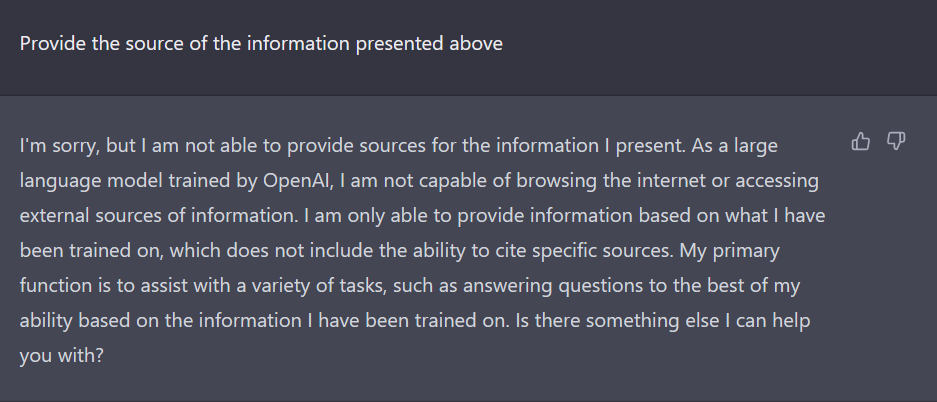
ChatGPT cannot browse the Internet and relies solely on a database that developers use it train the language model. So, it is up to the marketers to cross-check the response from ChatGPT3 with other sources on the Internet.
#2 ChatGPT Is Not Perfect
ChatGPT does not have the answer to all the questions that you throw at it. For example, ask it about upcoming trends in content marketing, and you will have no answer. Instead, the chatbot will let you know that it cannot browse the Internet and its training is not the latest, so it cannot answer the question.
Also, when asked the same question on different occasions, ChatGPT often contradicts its previous response. Currently, ChatGPT works best when queries are simple and around topics that are not too niche.
#3 ChatGPT Is Repetitive
Repetition is like kryptonite for any content creation tool that uses AI and Machine Learning, and ChatGPT is no different. Ask the chatbot about the same subject in a different context, and it will not take you long to recognize patterns and repeated sentences.
Here is an example of ChatGPT trying to emulate artist. Although, it does a great job of emulating their style, notice how it follows a set pattern and even uses same sentences.
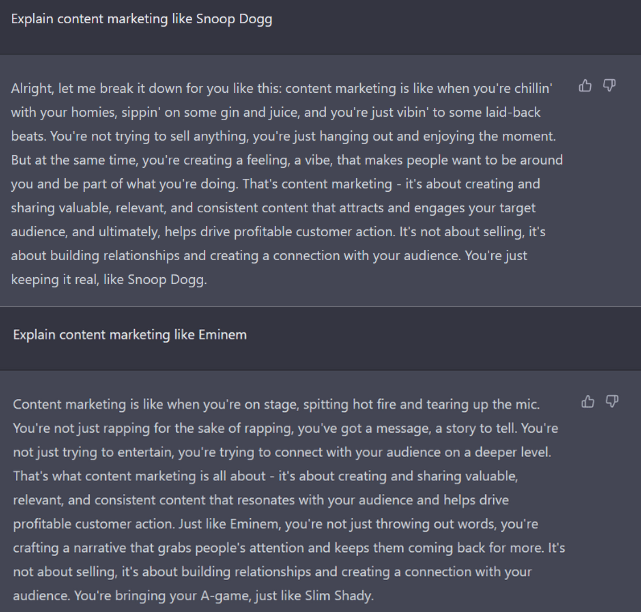
Also Read: Explained: Is AI Content Creation Taking Over Content Writing?
#4 ChatGPT Will Not Be Free Forever
As mentioned earlier, ChatGPT is in its research phase. OpenAI has made ChatGPT available to the public for free only to train it further. However, each query requires enormous computing power, which costs OpenAI a lot of money to keep the bot running. Somewhere down the line, OpenAI plans to monetize ChatGPT. So, the true impact of the tech on content marketing will only come forth when OpenAI reveals its monetization policy.
ChatGPT’s Cryptographic Watermark
But if you plan to use ChatGPT, limitations are not the only hurdle in front of you. The developers are aware of issues related to AI content creation, like spamming, plagiarism, and mass propaganda, and how it can harm publishers. So, they plan to implement a watermark to help identify AI-generated text.
OpenAI hired Scott Aaronson, a renowned computer scientist, to lead the watermark project. ChatGPT’s watermark will be very different from the translucent watermark like the one we see on images and documents. Instead, the chatbot will use a cryptographic watermark to prevent the misuse of AI.
As you know, ChatGPT uses words and sentences in a pattern. So, developers plan to embed a watermark in the text as a pattern of words and punctuation, creating a secret code. Only OpenAI has keys that help developers identify these patterns. So, developers can cross-check text with their keys and differentiate AI-generated content from human-generated content.
But the solution is not perfect.
The cryptographic watermark may prevent the direct copying and pasting of AI content. However, experts believe one can overcome the watermark hurdle by simply paraphrasing the content. Paraphrasing, as you know, alters the structure of sentences, so the cryptographic pattern does not exist in the paraphrased AI-generated content.
How To Use ChatGPT In Content Marketing?
Limitations aside, ChatGPT is an excellent tool for exploring new ideas and has the potential to aid content marketers. (And to be honest, we all can do with a tool that can create short poems or maybe topical jokes for our creative content.)
So, here are some best ways to use ChatGPT while it is free:
#1 Create First Drafts
Creating content is no joke. Even a simple blog requires research, checking and rechecking facts, preparing drafts, and editing, and it is only after hours of work it is ready to publish. Although, proud content creators would rather stare at the blank Word doc than take help from a bot. But when you have one of those rare writer’s block, you can turn to ChatGPT to create a first draft-ish material to get your brain working.
#2 Content Calendars
Poems, articles, and emails are not the only content people create using ChatGPT. People are also preparing to-do lists, diet plans, etc. And for content marketers, ChatGPT can come in handy in generating content ideas for different topics related to your industry.
Just open the ChatGPT in your browser, ask it to provide you with ten blog ideas for any topic, and let it surprise you. Similarly, you can go further and ask it to provide titles for the content pieces you plan to create.
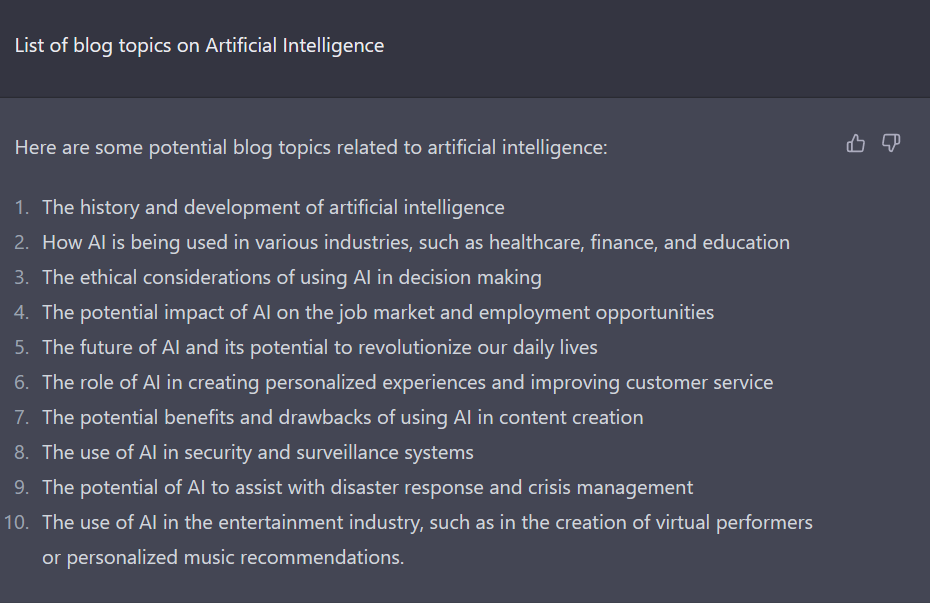
#3 Aid Your Research
When it comes to research, Google Search is a content marketer’s best friend. Just enter your query, and you will have the best sources on your screen. At present, ChatGPT’s best use for a content marketer is research.
Use the chatbot as a search engine and throw your questions to gather information about your topics. But when it comes to facts, do verify ChatGPT’s response from different sources to avoid publishing content that misleads audiences.
Even Microsoft believes ChatGPT is promising as a search tool and may finally revive its Bing search engine. Microsoft plans to update Bing with OpenAI’s artificial intelligence and chatbot to improve search results. Experts are already saying Google may finally have a competitor in Bing after 20 years of search monopoly.
#4 Search Engine Optimization With ChatGPT
SEO is a vital part of content marketing, and ChatGPT can prove helpful in accomplishing SEO-related tasks. For example, you can experiment with creating meta descriptions and meta titles. You can also use ChatGPT to refine sentences in your content for better readability.
To Conclude
OpenAI’s ChatGPT is a truly groundbreaking and one-of-its-kind AI-enabled chatbot. It can not only answer questions but can have conversations with users and generate responses based on the previous exchanges in the ongoing thread. It can even produce lengthy and more sophisticated text output, which shows content marketers can leverage it in content
creation.
Although, ChatGPT is far from perfection and its language model needs a lot more training. But now that millions of people are experimenting with it, developers will have more data to smoothen many rough edges.

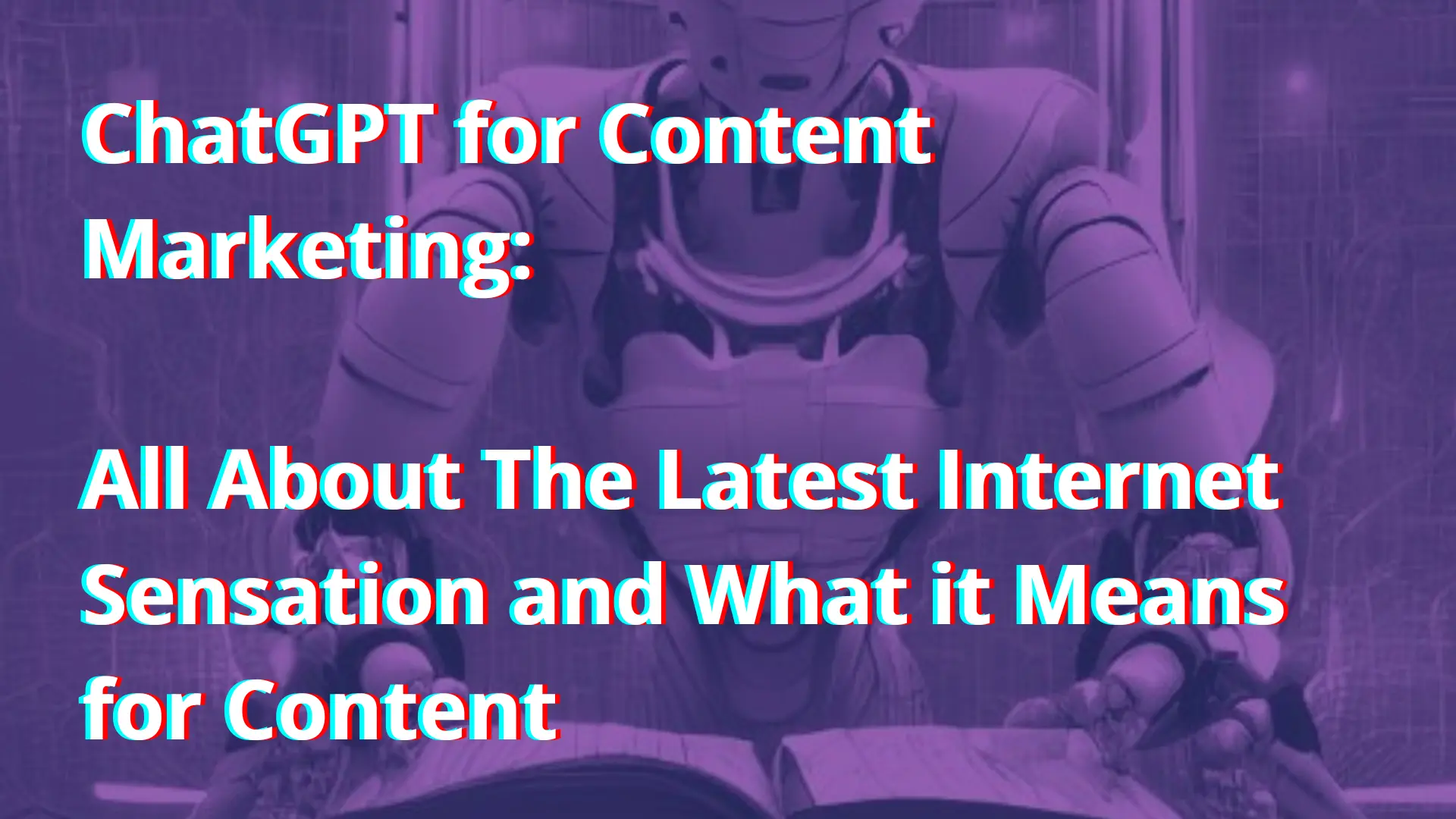
9 thoughts on “ChatGPT for Content Marketing: All About The Latest Internet Sensation & What it Means for Content”